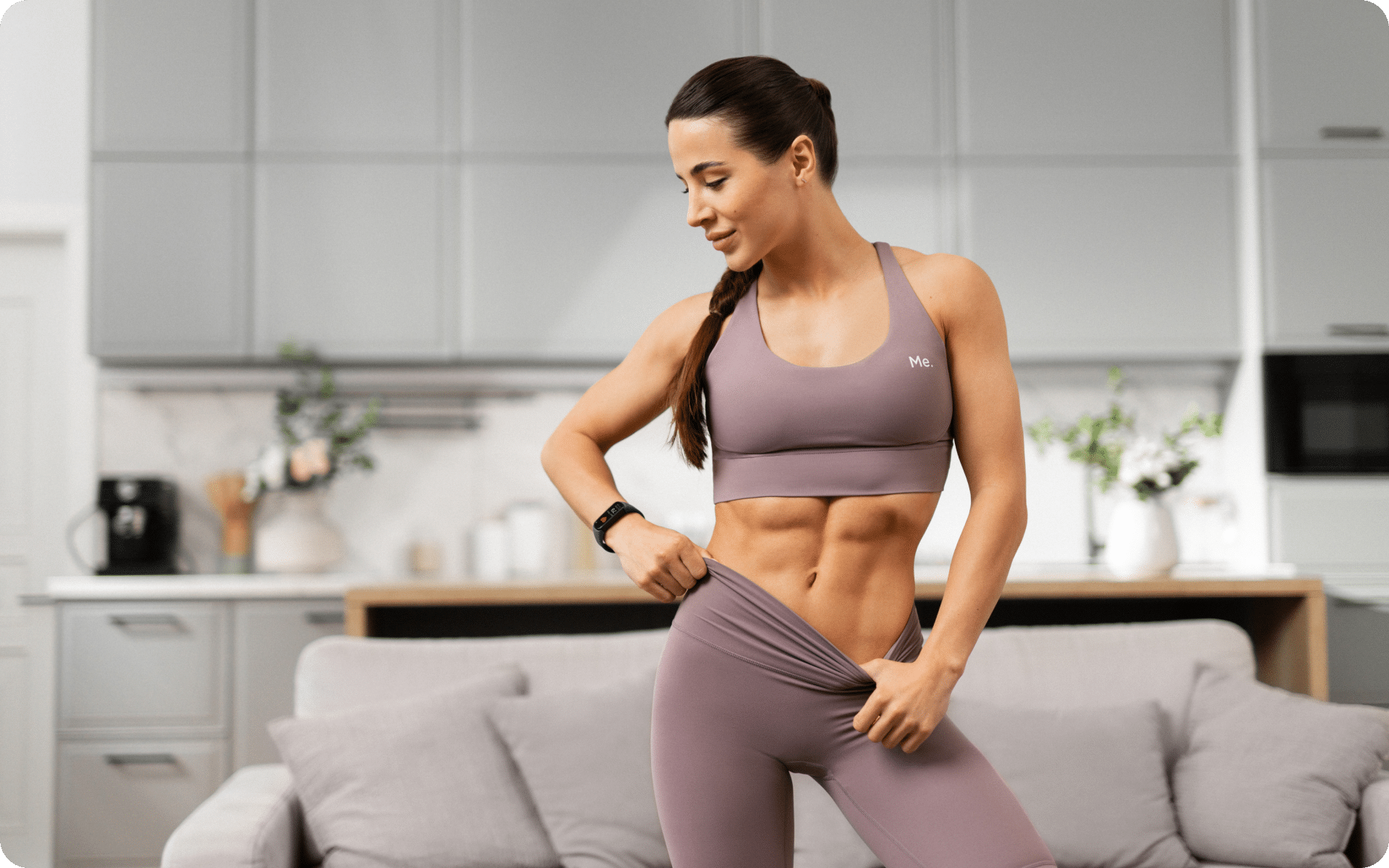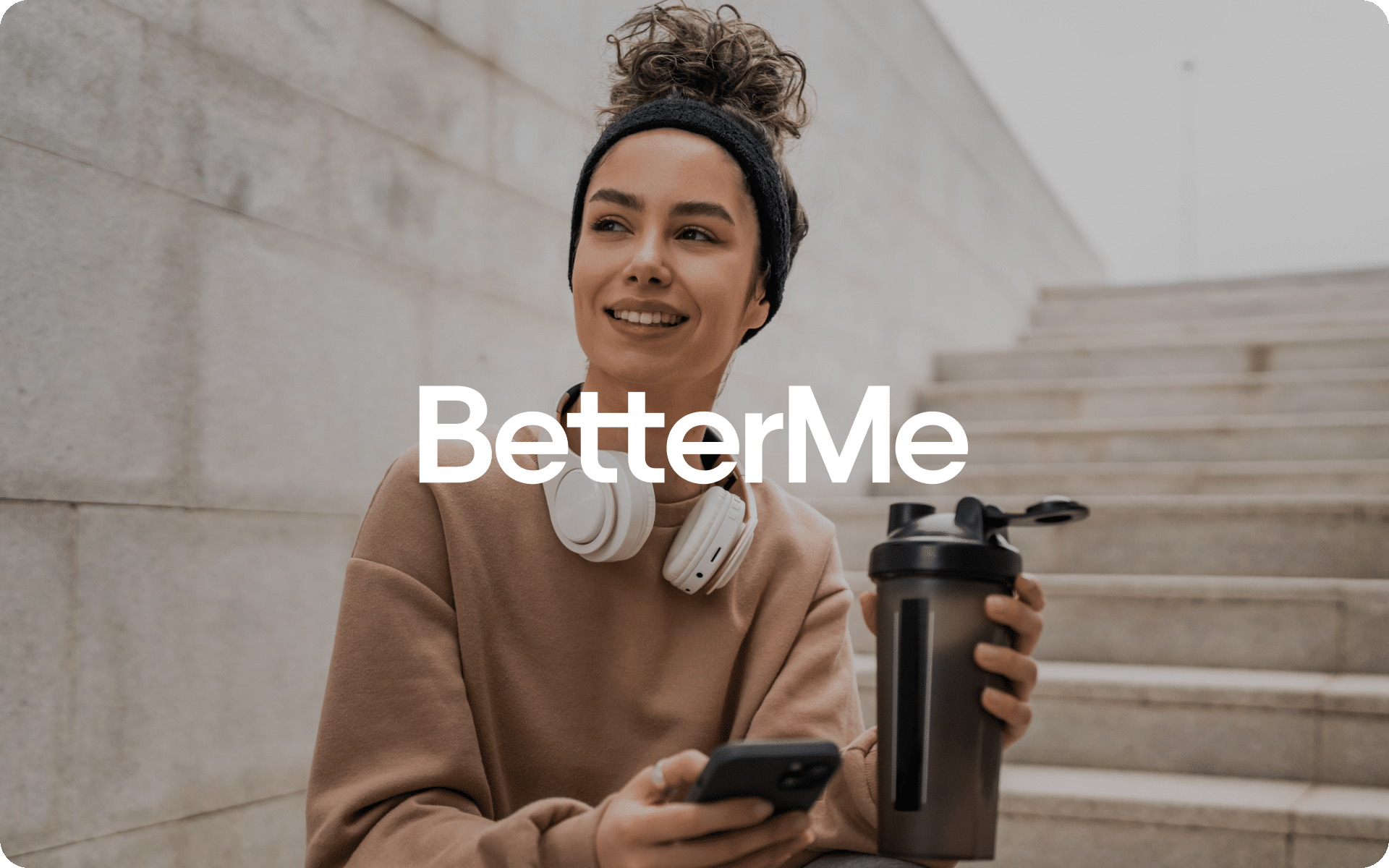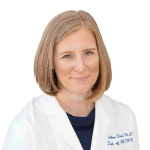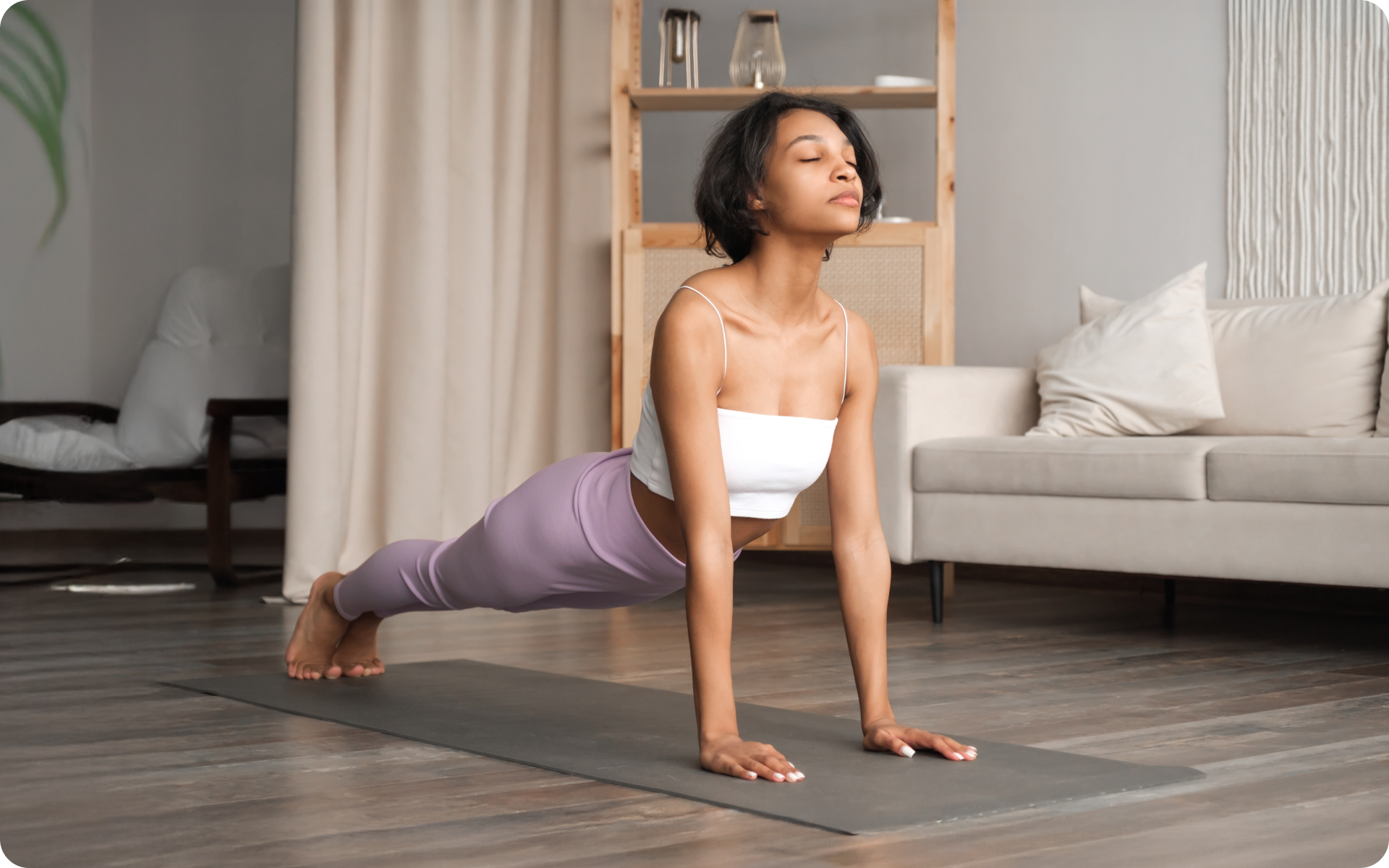The frustration that comes after you hit your goal but still don’t have the body you envisioned can be hard to manage. After months, perhaps even years of healthy eating and exercise, you want nothing short of a toned, smooth body. But no matter how hard you work, sometimes your body doesn’t cooperate.
Your frustration is understandable. We all deserve a reward for our hard work and perseverance. But what if it’s not fat you see? What if it’s loose skin instead? Telling the difference between fat and loose skin can be difficult, so we want to help you understand how they differ and what you can do about it.
The good news is that whether you’re dealing with fat or loose skin, there are solutions. However, it all starts with understanding the difference between the two.
How to Tell Loose Skin from Fat
Appearance is the most basic way to tell the difference between fat and loose skin. Loose skin typically looks like a thin sheet of sagging fabric that hangs or bunches up on the body. It’s often wrinkled or creased and it doesn’t feel solid as fat does. Fat, on the other hand, appears as a thick layer of padding that feels solid when you press it.
What Causes Loose Skin?
Weight loss is a common factor for making your skin lose its elasticity and become loose and saggy (14).
When you gain weight, you’re generally ‘expanding’ and your skin must stretch to contain your larger size. The extra fat from weight gain usually lies on top of the muscle and right under the skin. The more fat you have, the more your skin will expand.
Once you start losing weight, your skin also starts to shrink to fit your new smaller size. However, if and when you lose a significant amount of weight in a short period of time, your skin cannot keep up with the change and it becomes weaker, resulting in reduced collagen fibers and structure. (8).

How to Get Rid of Loose Skin
If you’ve determined that the extra layer of skin you see is loose skin, there are several things you can do to remedy the situation.
The first step is to ensure that you’re taking the necessary steps to maintain the muscle mass that you’ve worked so hard to achieve. Performing regular resistance training and eating a balanced diet will help you keep the shape you have.
If these steps don’t seem to be doing enough, you may want to consider surgery. Surgical procedures such as tummy tucks and body lifts are designed to remove excess skin, which results in a smoother and more toned appearance.
If you’re looking for something less invasive, certain laser treatments can be used to treat loose skin too.
Lean and toned up body isn’t just a far-fetched fantasy. Check out the BetterMe app and watch it propel your weight loss journey into high gear!
What Causes Stubborn Fat?
What many of us call stubborn fat is actually just fat that has been stored in the body for a long time and is resistant to dieting and exercise.
There’s no definitive answer to what causes this type of fat, but common causes include:
- Age – As you age your body’s natural metabolism slows down, which makes it harder to burn fat.
- Genetics – Some people are genetically predisposed to having more fat stored in certain areas of the body.
- Hormones – Research has suggested that there is a clear link between hormones, such as insulin and estrogen, and excess weight (13).
If you have any concerns, please consult a healthcare professional.
How to Get Rid of Stubborn Fat
If you’re dealing with stubborn fat, there are several things you can do to reduce it.
The first is to make sure you’re following a healthy, balanced diet and getting plenty of exercise. Diet and exercise can help reduce fat deposits in many areas of the body, although it may take time to get rid of stubborn fat.
The next step is to consider non-invasive treatments that are safe and effective (10). It’s always recommended that you consult your healthcare provider beforehand. 
What Burns the Most Fat?
While a holistic approach to your lifestyle and diet can be highly beneficial, are there any specific things that will help you burn fat the most?
Protein-Rich Foods
Food and diet can help with fat-burning. Protein-rich foods are the best for fat burning. This macronutrient increases levels of the satiety (appetite-reducing) hormones in the body, which can help prevent you from overeating (4, 6). It’s important to remember that the body stores any extra calories it doesn’t use as fat.
The body also uses energy to digest different nutrients, which is known as diet-induced thermogenesis. Protein utilizes approximately 20 to 30 percent energy to digest and metabolize. It only requires 0 to 3 percent energy to metabolize fats and 5 to 10 percent to metabolize carbs (2).
Exercise combined with diet is most effective for fat burning, i.e. calorie burning. To burn fat, you need to do both cardio and strength training.
Strength Training
Strength training, aka resistance or weight training, helps increase muscle mass in the body. More muscle means your body is constantly burning more calories whether you’re working out or not, which can contribute to fat burning. Research on strength training has shown that this form of exercise is good for overall fat loss and also visceral fat loss (aka belly fat loss) (12).
Cardio Workouts
Cardio is also fantastic for fat burning. Strength training might help burn fat long after the workout is done, but cardio burns a large number of calories during the actual workout. Research has shown that cardio or aerobic exercise can help reduce belly fat, waist circumference, and belly fat while also increasing muscle mass (3, 5).
How to Remove Belly Fat
Belly fat is generally harder to get rid of than other kinds of body fat, but it is not impossible to do away with. Some tips that can help you reduce and eventually remove belly fat are:
- Reduce your calorie intake – Cutting your calorie intake works great for weight loss and belly fat loss too
- Eat enough protein for your requirements – As stated above, your body burns more calories to digest and metabolize it, which helps with fat-burning
- Eat more intuitively – Only eat when you’re truly hungry as this could help prevent overeating, which is a huge contributor to increased belly fat
- Limit your alcohol intake – Alcohol is one of the biggest culprits of increased belly fat, more so in men than women – remember that alcohol is mostly just empty calories and it makes you crave sugary and greasy high-fat foods that aren’t good for your figure, midriff, and heart
- Move more – A healthy diet, appropriate calorie deficit diet, and exercise are the best route to less belly fat – remember to combine both cardio and strength training in your routine
Great Home Workouts to Lose Belly Fat
- Cycling
- Swimming
- Mountain climbers
- Dancing
- Squats and squat variations
- Elbow planks and all other plank variations
- Lunges
- Ab/core-specific exercises such as crunches, sit-ups, and flutter kicks
Does Walking Burn Fat?
Yes, it does. Contrary to popular belief, sit-ups, crunches, and other core-specific workouts are not the only exercises for flattening the stomach. Full-body cardio workouts such as walking, jogging, dancing, HIIT, and Tabata work just as well, if not even better. If you start walking just 30 minutes a day, 5 days a week and improve your diet, you’ll start to see positive changes in just a couple of weeks.
A Note About Visceral Fat
While “stubborn fat” gets a lot of attention due to it being the most visible and aesthetically unfavorable type of fat, it’s important to remember that visceral fat is just as dangerous. This type of fat is located deep in the abdominal cavity and surrounds organs such as the stomach, intestines, and liver.
Too much of this kind of fat can drastically increase your risk of serious health conditions such as heart disease, stroke, and diabetes (1). To reduce visceral fat, make sure you’re following a healthy diet, exercising regularly, and getting enough sleep.
Looking for a way to break the vicious cycle of weight loss and tone up all the jiggly parts? Watch the extra pounds fly off and your muscles firm up with the BetterMe app!
Managing Your Weight Is Key to Preventing Loose Skin and Stubborn Fat
The saying “prevention is better than cure” is especially true when it comes to managing your weight. Keeping your body weight at a healthy level will help you avoid loose skin and stubborn fat in the future.
You probably know the run-of-the-mill advice for losing weight – eat a balanced diet and exercise regularly – but here are some other tips that can help you stay on track:
- Track your calorie intake and make sure it’s within the recommended range for your age and gender
- Eat smaller meals throughout the day rather than large ones – this will help you stay full without consuming too many calories
- Make sure to get enough protein in your diet, as this helps with muscle growth and repair and is also more filling than carbs and fat
- Incorporate strength training into your workout routine to help keep your metabolism up and build muscle
- Drink plenty of water throughout the day to keep your body hydrated drinking water before meals is also an excellent way to reduce your calorie intake
- Get enough sleep – studies have shown that people who get enough sleep tend to have healthier body weights (11)
- Stay consistent with your exercise routine—the more consistent, the better your results will be. Any movement is good, so even when you can’t get to the gym, try to find ways to remain active.
Read more: Counting Macros for Weight Loss: Pros, Cons, and How-To (A Beginner’s Guide)

FAQs
Does loose skin mean less fat?
In most cases, yes, it does. As seen above, weight loss, particularly drastic weight loss, is the biggest cause of loose skin. Pregnancy is another cause of loose skin in women and it can affect those of a healthy weight, petite, and even overweight women.
Do stretch marks mean loose skin?
Not necessarily. Stretch marks appear when the skin stretches and this can be due to multiple reasons, including:
- Growth spurts that occur during puberty
- Pregnancy
- Rapid weight loss or gain
- Weight training when you have rapid muscle growth
Stretch marks just mean that your skin has expanded to accommodate a newer body or muscle size. If you lose the fat or muscle at a slower/healthy rate, chances are that your skin will not become loose and saggy.
Can loose skin go away naturally?
With small amounts of loose skin, it may be beneficial to follow general strategies to improve the state of your skin, such as consuming collagen-rich foods. However, if your loose skin causes you significant discomfort, it’s best to consult a healthcare professional to determine the best treatment for you.
How long does loose skin take to tighten?
According to the American Academy of Dermatology, depending on how significant the loose skin is and the tightening procedure of choice, you can see changes in as little as 2 months(9).
Why is belly fat the last to go?
There is no scientific answer to this. Some people lose stomach fat faster than others and so the answer may lie in genetics and where you generally store the most fat.
Bloating vs fat: what’s the difference?
The main difference between bloating and fat is that the former generally occurs after meals and the roundness of the stomach isn’t consistent – it comes and goes – while with the latter, the roundness of the stomach is consistent and it’s typically accumulated over a period of time.
The Bottom Line
In conclusion, loose skin and stubborn fat can be incredibly frustrating to deal with, but there are treatments available that can help you achieve your desired results. Whether through lifestyle changes or medical treatments, you should take the time to figure out what works best for you so you can start to feel more confident in your own skin.
DISCLAIMER:
This article is intended for general informational purposes only and does not serve to address individual circumstances. It is not a substitute for professional advice or help and should not be relied on for making any kind of decision-making. Any action taken as a direct or indirect result of the information in this article is entirely at your own risk and is your sole responsibility.
BetterMe, its content staff, and its medical advisors accept no responsibility for inaccuracies, errors, misstatements, inconsistencies, or omissions and specifically disclaim any liability, loss or risk, personal, professional or otherwise, which may be incurred as a consequence, directly or indirectly, of the use and/or application of any content.
You should always seek the advice of your physician or other qualified health provider with any questions you may have regarding a medical condition or your specific situation. Never disregard professional medical advice or delay seeking it because of BetterMe content. If you suspect or think you may have a medical emergency, call your doctor.
SOURCES:
- Body fat distribution, in particular visceral fat, is associated with cardiometabolic risk factors in obese women (2017,nih.gov)
- Diet induced thermogenesis (2004, .ncbi.nlm.nih.gov)
- Effect of aerobic exercise on waist circumference in adults with overweight or obesity: A systematic review and meta‐analysis (2022, ncbi.nlm.nih.gov)
- Effect of short- and long-term protein consumption on appetite and appetite-regulating gastrointestinal hormones, a systematic review and meta-analysis of randomized controlled trials (2020, pubmed.ncbi.nlm.nih.gov)
- Effects of aerobic exercise on waist circumference, VO2 max, blood glucose, insulin, and lipid index in middle-aged women: A meta-analysis of randomized controlled trials (2022, pubmed.ncbi.nlm.nih.gov)
- Ghrelin and glucagon-like peptide 1 concentrations, 24-h satiety, and energy and substrate metabolism during a high-protein diet and measured in a respiration chamber (2006, pubmed.ncbi.nlm.nih.gov)
- Hormones and Hemodynamics in Pregnancy (2014,nih.gov)
- Image Analyzer Study of the Skin in Patients With Morbid Obesity and Massive Weight Loss (2015,nih.gov)
- MANY WAYS TO FIRM SAGGING SKIN (n.d., aad.org)
- Review of the Mechanisms and Effects of Noninvasive Body Contouring Devices on Cellulite and Subcutaneous Fat (2016,nih.gov)
- Sleep deprivation and obesity in adults: a brief narrative review (2018,nih.gov)
- The Effect of Resistance Training in Healthy Adults on Body Fat Percentage, Fat Mass and Visceral Fat: A Systematic Review and Meta-Analysis (2022, pubmed.ncbi.nlm.nih.gov)
- The Impact of Hormonal Imbalances Associated with Obesity on the Incidence of Endometrial Cancer in Postmenopausal Women (2020, ncbi.nlm.nih.gov)
- Skin Changes Due to Massive Weight Loss: Histological Changes and the Causes of the Limited Results of Contouring Surgeries (2020, pubmed.ncbi.nlm.nih.gov)














